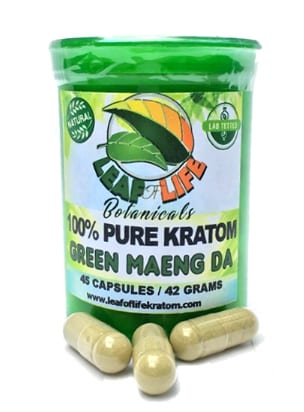Photo by Sidney Pearce on Unsplash
Roses have held a place of prominence in human culture for centuries, revered for their striking beauty and rich symbolism. Historically, roses have been cherished not only for their aesthetic appeal but also for their deep cultural and emotional significance. From ancient civilizations to modern times, roses have come to symbolize love, beauty, and passion. Their presence in literature, art, and traditions underscores their lasting impact on human history.
The cultivation of roses dates back to ancient Persia, where they were first grown for their fragrant petals. Over time, the cultivation and appreciation of roses spread to Greece and Rome, where they became integral to various ceremonies and celebrations. In the Middle Ages, roses were often used in religious contexts, symbolizing purity and the Virgin Mary. With the advent of the Renaissance, roses became emblematic of romantic love and were frequently featured in poetry and paintings.
There are over 300 species and thousands of cultivars of roses, each with its own unique characteristics. The most common types include hybrid teas, known for their large, single blooms; floribundas, recognized for their clusters of flowers; and grandifloras, which combine the traits of both hybrid teas and floribundas. Climbing roses and ground cover roses offer versatility in landscaping, while miniature roses are popular for indoor gardening and potted displays.
Across different cultures, roses have been utilized in myriad ways. In traditional Chinese medicine, roses are used for their purported health benefits, including improving digestion and reducing stress. In Western cultures, roses are often associated with romantic gestures, such as Valentine’s Day bouquets. Additionally, rose petals are commonly used in culinary and cosmetic applications, from rosewater in Middle Eastern cuisine to rose-scented lotions and perfumes.
The enduring allure of roses lies in their multifaceted nature, encompassing both tangible and intangible qualities that continue to captivate and inspire people around the world.
Horticulture
Roses have long been cherished in horticulture for their unparalleled beauty and versatility. They play a significant role in both private gardens and public landscapes, offering a diverse range of colors, shapes, and fragrances that can elevate any outdoor space. The aesthetic appeal of roses is undeniable; their blooms can transform a simple garden into a vibrant, picturesque retreat. Public parks and urban landscapes also benefit from the inclusion of rose bushes, which add a touch of elegance and natural beauty to city environments.
There are numerous varieties of roses, each suited to different climates and settings. For instance, hybrid tea roses are known for their large, high-centered blooms and are ideal for formal gardens in temperate zones. Floribunda roses, with their clusters of flowers, are perfect for creating colorful borders and hedges. In contrast, rugosa roses are highly tolerant of harsh climates and can thrive in coastal areas where other varieties might struggle. Climbing roses, with their sprawling canes, are excellent for covering walls, trellises, and pergolas, adding vertical interest to garden designs.
Growing and maintaining healthy rose plants requires attention to several key factors. First, selecting the right location is crucial; roses generally prefer well-drained soil and a spot that receives at least six hours of direct sunlight daily. Proper planting techniques, such as ensuring the graft union is slightly above the soil level, can promote vigorous growth. Regular watering, especially during dry spells, is essential to keep the soil consistently moist but not waterlogged. Mulching around the base of rose plants helps retain moisture and suppress weeds.
Pruning is another critical aspect of rose care. Removing dead or diseased wood, as well as shaping the plant to encourage air circulation, can prevent common problems like mildew and black spot. Fertilization with a balanced rose-specific fertilizer provides the necessary nutrients for robust flowering. By adhering to these guidelines, gardeners can enjoy the myriad benefits of roses, from their stunning visual impact to their delightful fragrance.
Health Benefits
Roses, renowned for their aesthetic appeal, also offer a range of health benefits that are deeply rooted in their petals and hips. Rose petals and rose hips, the fruit of the rose plant, have been used for centuries in traditional medicine due to their rich antioxidant properties. These antioxidants play a crucial role in neutralizing free radicals, thereby preventing cellular damage and reducing the risk of chronic diseases.
One of the most notable health benefits of rose petals is their ability to improve skin health. Rich in vitamins A, C, and E, rose petals help in hydrating and rejuvenating the skin. Their anti-inflammatory properties aid in soothing irritated skin, reducing redness, and promoting a healthy complexion. Moreover, rose extracts are frequently included in skincare products such as toners, creams, and serums, providing a natural remedy for various skin concerns.
Rose hips are another potent component of the rose plant with significant health advantages. They are high in vitamin C, which is essential for boosting the immune system and enhancing the body’s ability to repair tissues. Additionally, rose hips contain compounds that support joint health by reducing inflammation and pain associated with conditions like arthritis. This makes rose hips a popular ingredient in supplements and wellness products aimed at improving overall health and wellness. If you would like to learn more about the hips, you can read my article here.
Traditional medicine has long utilized rose extracts for their therapeutic effects. In herbal medicine, rose petals are often used to prepare teas that can help in relieving stress and anxiety, thanks to their calming properties. The infusion of rose petals in water can also serve as a natural remedy for digestive issues, promoting a healthy digestive tract.
In contemporary health and wellness practices, rose extracts are incorporated into a variety of products including dietary supplements, essential oils, and herbal teas, making it easier for individuals to reap their benefits. Whether used topically or ingested, the health benefits of roses are profound, underscoring their value beyond mere ornamental beauty.
Desserts
Rose petals and rose water are commonly used in desserts to impart a subtle floral essence. Middle Eastern cuisines, for instance, frequently incorporate rose water in their confections. Delicacies like Turkish delight and baklava often feature this fragrant ingredient. Similarly, in India, rose petals are used to garnish sweets such as gulab jamun and rasgulla, enhancing both visual appeal and taste. A simple recipe to try at home is to add a few drops of rose water to a traditional rice pudding, transforming it into a luxurious treat.
Beverages
In the realm of beverages, roses offer refreshing and aromatic options. Rose water is a key ingredient in many traditional drinks. The Middle Eastern drink ‘Jallab’ is a popular example, combining rose water with dates and grape molasses. In South Asia, ‘Falooda’ is a beloved drink made with rose syrup, vermicelli, and basil seeds. For a simpler, yet elegant homemade option, try adding a splash of rose water to lemonade or iced tea for a fragrant twist.
Gourmet Dishes
Roses also find their way into savory dishes, particularly in gourmet cooking. Persian cuisine, for example, uses rose petals and rose water in a myriad of dishes, adding a nuanced flavor profile. The famous Persian stew, Fesenjan, sometimes includes a hint of rose water to complement its rich, tangy sauce. Another easy recipe to experiment with is to create a rose-infused butter. Simply blend softened butter with finely chopped rose petals and a touch of rose water, then use it to top grilled fish or steamed vegetables for an aromatic enhancement.
These culinary uses of roses not only elevate the flavor and aroma of dishes but also connect us to a rich tapestry of cultural traditions. By experimenting with rose petals and rose water in your kitchen, you can bring a touch of elegance and history to your culinary creations.
Roses, often celebrated for their beauty and fragrance, also hold a prominent place in the culinary world. The delicate petals and aromatic rose water are versatile ingredients that have been employed in a variety of culinary traditions. In many cultures, roses are not just admired for their ornamental value but are also cherished for their unique flavor and aromatic properties.
Aromatherapy
Roses have long been cherished not only for their beauty but also for their profound effects on mental and emotional well-being. In the realm of aromatherapy, rose essential oil stands out as a powerful tool for reducing stress, uplifting mood, and promoting relaxation. Extracted from the petals of the rose flower, this essential oil carries the plant’s soothing and calming properties, making it a popular choice for those seeking mental clarity and emotional balance.
The benefits of rose essential oil in aromatherapy are well-documented. Its pleasant and delicate fragrance is known to have a calming effect on the nervous system, helping to alleviate anxiety and depression. The aroma of roses can stimulate the release of endorphins, often referred to as “feel-good” hormones, which can elevate mood and foster a sense of well-being. This makes rose essential oil a valuable addition to any stress-relief routine.
Incorporating rose-scented products into your daily life can be both simple and effective. One popular method is using a diffuser to disperse the rose essential oil throughout your living space. This creates a serene atmosphere that can help you unwind after a long day. Alternatively, adding a few drops of rose essential oil to a warm bath can provide a luxurious and relaxing experience, allowing the soothing properties of roses to permeate through the steam.
For a more direct application, rose essential oil can be used in massage therapy. When diluted with a carrier oil, such as jojoba or almond oil, it can be gently massaged into the skin to promote relaxation and enhance emotional well-being. Additionally, rose-scented candles and incense can offer a subtle yet effective way to enjoy the benefits of rose aromatherapy throughout the day.
Overall, the incorporation of roses in aromatherapy can significantly enhance mental and emotional health. Whether through diffusers, baths, massages, or scented candles, the timeless allure and therapeutic properties of roses continue to be a cherished resource for promoting relaxation and emotional balance.
Skincare And Beauty
Roses have long been cherished not only for their aesthetic appeal but also for their myriad benefits in skincare and beauty. The incorporation of rose oil, rose water, and rose extracts into beauty regimens can provide significant advantages for a variety of skin types. These rose-based products are lauded for their moisturizing, anti-aging, and soothing properties, making them indispensable in modern skincare.
Rose oil, derived from rose petals, is rich in vitamins and antioxidants, which help in hydrating and nourishing the skin. Its emollient properties ensure that the skin retains moisture, making it particularly beneficial for individuals with dry or sensitive skin. Additionally, the antioxidants present in rose oil combat free radicals, thereby reducing signs of aging such as fine lines and wrinkles.
Rose water, another popular derivative, is known for its anti-inflammatory and antibacterial properties. It can help soothe irritated skin, reduce redness, and maintain the skin’s pH balance. This makes rose water an excellent toner, ideal for use after cleansing to prepare the skin for further hydration. Its gentle nature ensures that it can be used on all skin types, including acne-prone and sensitive skin.
Rose extracts, often found in creams and serums, harness the combined benefits of rose oil and rose water. These extracts are packed with vitamins A and C, which promote healthy skin cell turnover and improve overall skin texture. The anti-inflammatory properties of rose extracts also help in calming irritated skin, making them suitable for individuals with eczema or rosacea.
Incorporating rose-based products into a daily beauty routine is straightforward. Start by using a rose water toner after cleansing to balance the skin’s pH. Follow up with a moisturizer containing rose oil to lock in hydration. For an added boost, consider using a serum with rose extracts to target specific skin concerns like aging or irritation. By integrating these products, one can enjoy the numerous benefits roses offer for skincare and beauty.
Environmental Impact
The cultivation of roses carries significant environmental considerations, particularly in the realms of sustainability and ecological benefits. One of the primary factors is the adoption of organic growing methods. By avoiding synthetic pesticides and fertilizers, organic rose farming reduces the potential for soil contamination and water pollution. This practice not only safeguards the surrounding ecosystems but also promotes healthier plant growth. Additionally, organic farming techniques often emphasize the use of compost and natural pest control methods, further minimizing the environmental footprint.
Water conservation is another critical aspect of sustainable rose cultivation. Given that roses require a substantial amount of water, especially during their blooming periods, implementing efficient irrigation systems such as drip irrigation can significantly reduce water usage. Mulching is another effective strategy, as it helps retain soil moisture, thereby decreasing the need for frequent watering. These practices are particularly vital in regions facing water scarcity or drought conditions.
Roses also contribute positively to the environment by supporting pollinators. Bees, butterflies, and other pollinating insects are attracted to the flowers, which provide essential nectar and pollen. This interaction not only aids in the reproduction of roses but also supports the broader ecosystem by enhancing pollinator populations. Healthy pollinator communities are crucial for the pollination of various plants, including many crops that humans rely on for food.
Furthermore, roses can enhance biodiversity in gardens and landscapes. A well-maintained rose garden can create a habitat for a variety of wildlife, including birds and beneficial insects. This increased biodiversity can lead to a more resilient and balanced ecosystem, reducing the likelihood of pest outbreaks and promoting overall garden health. By integrating roses into diverse planting schemes, gardeners can foster a more vibrant and sustainable environment.
Cultural And Symbolic Significance Of Roses
Roses have held a prominent place in various cultures and societies throughout history, symbolizing a myriad of emotions and messages. In art and literature, roses are often depicted as symbols of love, beauty, and passion. Famous works such as Shakespeare’s plays and numerous romantic poems have utilized roses to convey complex human emotions. The rose’s delicate yet resilient nature makes it a powerful symbol in storytelling and artistic expressions.
In many cultures, roses are integral to significant life events and ceremonies. For instance, in weddings, roses are a staple in bouquets and decorations, symbolizing love and happiness. The red rose, in particular, is a universal symbol of deep romantic love and desire. Conversely, white roses are often used in funerals to represent purity, reverence, and remembrance, providing comfort and conveying respect for the departed.
The symbolism of rose colors extends beyond red and white. Pink roses signify admiration and gratitude, making them a popular choice for expressing appreciation and joy. Yellow roses, with their bright and cheerful hue, symbolize friendship and joy but can also convey a sense of jealousy or infidelity depending on cultural context. Orange roses represent enthusiasm and passion, bridging the gap between friendship symbolized by yellow roses and love signified by red roses. Lastly, lavender roses are linked to enchantment and love at first sight, often chosen to express fascination and adoration.
Roses have also played a role in various cultural rituals and practices. In Ancient Greece and Rome, roses were associated with the gods and goddesses, symbolizing divine beauty and love. In the Victorian era, the language of flowers, or floriography, allowed individuals to communicate secret messages through the choice and arrangement of flowers, with roses often at the center of these intricate floral conversations.
Overall, the rose’s cultural and symbolic significance is vast and varied, touching upon themes of love, beauty, purity, and passion across different societies and historical periods. Whether in art, literature, or life’s most meaningful moments, roses convey emotions that transcend words, making them timeless symbols in human culture.
This post may contain affiliate/referral links. Read my full Disclosure/Disclaimer Policy.
Like this:Like Loading…
Related


